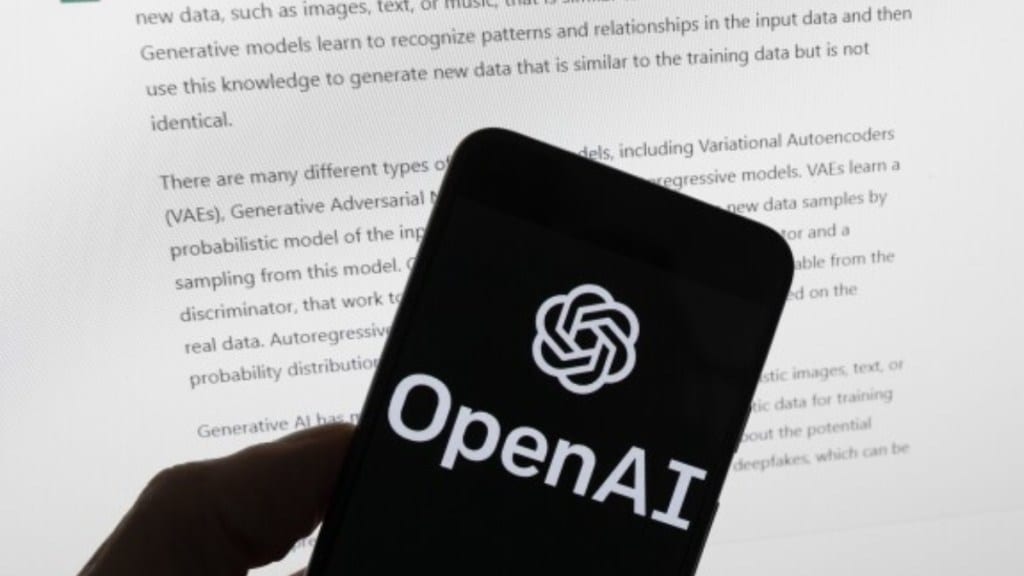India has long been the market where global tech giants experiment with affordability. Whether it was telecom pricing, streaming subscription, or smartphone launches, the market has consistently been the playground for testing low-cost models. Now, the same story is unfolding with artificial intelligence (AI). OpenAI’s new Rs 399 ChatGPT Go plan shows how affordability remains the most important lever to drive adoption in India. While it doesn’t offer access to GPT-5’s advanced reasoning, users stand to benefit with higher message limits, more image generations, increased file uploads and extended memory.
As per a Microsoft study, India is now the world’s fastest-growing AI adopter, with 65% of Indians using AI tools double the global average and a 30% adoption rate among businesses. The country is a key market for OpenAI, being second only to the US by user base. But OpenAI is not alone in making AI more affordable. Perplexity, through its partnership with Airtel, has made Pro access free for 390 million subscribers. Google’s Gemini is being embedded across Android and core Google services. Lastly, Microsoft’s Copilot is positioning itself as a productivity layer within Office and Windows.
Alongside these global players, Indian AI providers such as AI4Bharat, BharatGPT, Indus Project, Zoho, Krutrim AI, and Sarvam AI amongst others are debuting language-specific models and sector-focused solutions, addressing the nuances of Indic languages and local enterprise needs. A new offering is AI Fiesta, said to be the first global AI subscription born out of India; it offers access to six premium AI models, including ChatGPT, Gemini, Claude, Grok, Perplexity and DeepSeek, for an affordable Rs 999 per month. Basically, it undercuts individual AI subscriptions.
Together, these moves reflect a shift from catering to niche early adopters to embedding AI into the fabric of daily life in Aspirational India – Tier II cities and beyond, and are driven by affordability, accessibility, and vernacular reach. “What we’re really seeing with the Rs 399 ChatGPT plan, Google’s Gemini bundles, Microsoft Copilot Pro, and Airtel-Perplexity is not just a pricing war, it’s the maturation of the AI access model,” said Jacob Joseph, vice-president, Data Science, CleverTap.
The ‘demo booth’
According to him, free tiers are the ‘demo booth,’ paid tiers unlock capacity and premium reasoning, and now telcos and platform providers are turning AI into a bundled utility. “For Indian users, that means AI is no longer an exotic tool; it’s on your phone bill, in your browser, in your productivity suite. The friction to adoption is disappearing,” he added.
Paramdeep Singh, co-founder of Shorthills AI said that India’s position as a global services powerhouse in IT, financial research, KPOs and BPOs gives it a strong foundation to move into AI-enabled services and, over time, indigenous model development as compute costs fall and infrastructure scales. “The country’s vast population and diversity means that building India-centric AI models isn’t just desirable, it’s inevitable. It makes for a natural test bed for global players, because If a model can succeed here, scaling it globally is far easier,” he added.
Srividya Kannan, founder and CEO, Avaali Solutions, feels that OpenAI’s move signals a fundamental shift in how global players are viewing AI democratisation for India. “This isn’t just about affordability. It’s about recognising that India’s 1.4 billion people represent the world’s largest untapped AI market. By pricing aggressively for India, it validates our market’s strategic importance and accelerates mass adoption across diverse user segments, from students to business owners who were previously priced out of premium AI tools,” she said.
Trust also matters
Yet availability does not equal adoption. According to Prabhu Ram, vice-president – Industry Research Group, CyberMedia Research, digital literacy, specced-up value-for-money smartphones, and consistent internet access remain critical enablers for adoption. Trust also matters: concerns over privacy, accuracy, and bias could slow mainstream use, while the challenge of delivering context-rich, culturally relevant AI in Indic languages is far from solved.
For providers, providing lower tier or free advanced AI is not just about enabling access – it is also strategic. According to Ram, by making AI more affordable and more widely available, AI providers aim to drive adoption at scale, secure user loyalty, and crucially, generate richer interaction data to refine and finetune their models. In a market as diverse as India, this data – spanning languages, contexts, and use cases – will potentially enable global players build more capable, localised, and competitive AI systems.
The real opportunity lies in this pricing pressure catalysing Indian innovation. While foreign players compete on cost, Indian companies can compete on context. ie. building AI that understands our languages, cultural nuances, and specific use cases. “The question isn’t whether we can match Silicon Valley’s pricing, but whether we can deliver solutions that are inherently more relevant to Indian users. This pricing war ultimately benefits our ecosystem by creating space for homegrown solutions that combine global AI capabilities with deep local understanding,” Kannan summarised.

